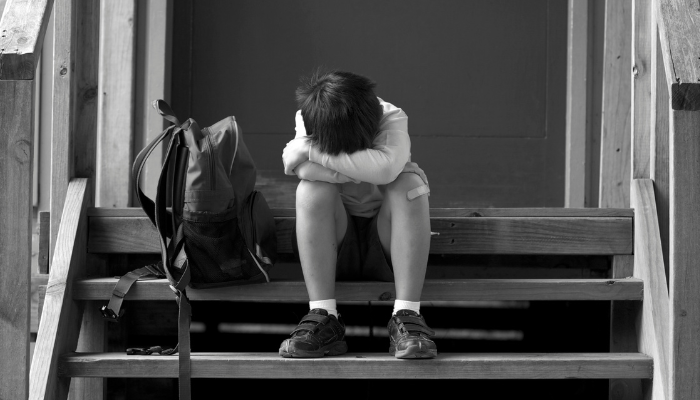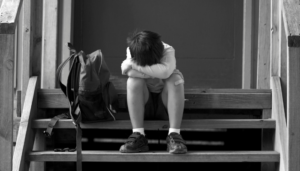Bullying in high school remains a pervasive issue in high schools across the globe, affecting the lives of countless students. According to a recent survey conducted by the National Center for Education Statistics (NCES), approximately 20.2% of high school students in the United States reported being bullied during the 2019-2020 school year. This alarming statistic sheds light on the urgent need for effective strategies to address and combat bullying.
In this blog, we will explore the various forms of bullying prevalent in high schools, delve into the psychological impact on victims, and most importantly, discuss actionable strategies for both coping with and seeking help to end the cycle of bullying.

Identifying the Forms of Bullying:
Bullying can manifest in various forms, including verbal, physical, social, and cyberbullying. Verbal bullying involves the use of harmful words, insults, and teasing, while physical bullying includes any form of physical harm or intimidation.
Social bullying, on the other hand, revolves around manipulating social relationships to isolate or ostracize an individual. In the digital age, cyberbullying has become increasingly prevalent, with harmful actions occurring online through social media, text messages, or emails. Recognizing these different forms is crucial for addressing and preventing bullying effectively.
The Psychological Impact:
The consequences of bullying extend far beyond the immediate circumstances, impacting the mental health and overall well-being of victims. According to the American Academy of Child and Adolescent Psychiatry (AACAP), individuals who experience bullying may suffer from anxiety, depression, low self-esteem, and even contemplate self-harm or suicide. Understanding the psychological toll of bullying emphasizes the importance of implementing strategies to cope with and prevent such harmful behaviors.
Strategies for Coping:
-
Develop a Support System: Encourage students to build a network of supportive friends, family, and mentors. Having a strong support system can provide emotional resilience and a sense of belonging, mitigating the negative effects of bullying.
-
Practice Self-Care: Emphasize the importance of self-care activities such as exercise, mindfulness, and hobbies. These activities can help students manage stress, boost self-esteem, and maintain a positive mindset.
-
Assertiveness Training: Teach students assertiveness skills to help them stand up for themselves in a non-confrontational manner. This can empower them to set boundaries and communicate effectively, reducing the likelihood of becoming a target for bullying.
Seeking Help:
-
Report to Authorities: Encourage students to report incidents of bullying to school authorities or trusted adults. Many schools have anti-bullying policies in place, and reporting is often the first step in initiating appropriate interventions.
-
Counseling Services: Schools typically offer counseling services for students dealing with bullying. These professionals can provide emotional support, coping strategies, and intervention plans to address the causes of bullying.
-
Community Resources: Make students aware of community resources and helplines that specialize in bullying prevention and mental health support. Local organizations and hotlines can offer assistance and guidance in times of crisis.
Children who suffer from bullying in high school
Children who suffer from bullying can experience a range of negative consequences that extend beyond the immediate circumstances. The impact of bullying can affect various aspects of a child’s life, including their mental, emotional, and physical well-being. Here are some common outcomes that children who are victims of bullying may face:
-
Emotional and Psychological Effects:
-
-
Anxiety and Depression: Bullying can lead to heightened levels of anxiety and depression in victims. The constant stress and fear of harassment can contribute to the development of mental health issues.
-
-
-
Low Self-Esteem: Persistent bullying can erode a child’s self-esteem and self-worth. They may begin to doubt their abilities and value as an individual.
-
-
-
Isolation and Loneliness: Victims of bullying often face social isolation because they are being targeted. This isolation can lead to feelings of loneliness and a lack of connection with peers.
-
-
Academic Impact:
-
-
Decline in Academic Performance: Bullying can interfere with a child’s ability to concentrate and succeed academically. The emotional distress caused by bullying may lead to a decline in school performance.
-
-
Physical Health Consequences:
-
-
Headaches and Stomachaches: The stress and anxiety resulting from bullying can manifest as physical symptoms such as headaches and stomachaches. Persistent physical complaints may lead to frequent absences from school.
-
-
Behavioral Changes:
-
-
Withdrawal: Some victims of bullying may withdraw from social activities, both in and out of school, to avoid potential confrontations or humiliation.
-
-
-
Aggressive Behavior: In some cases, children who are bullied may exhibit aggressive behavior as a way to cope with their feelings of powerlessness.
-
-
Long-Term Effects:
-
-
Impact on Future Relationships: Bullying experiences can influence a child’s ability to form healthy relationships in the future. Trust issues and difficulties in social interactions may persist into adulthood.
-
-
-
Higher Risk of Mental Health Issues: Long-term exposure to bullying increases the risk of developing chronic mental health conditions, such as anxiety disorders, depression, or post-traumatic stress disorder (PTSD).
-
-
Suicidal Thoughts and Actions:
-
-
Increased Risk of Self-Harm and Suicide: In extreme cases, victims of severe and prolonged bullying may experience thoughts of self-harm or suicide. It is crucial to take any mention of suicidal thoughts seriously and seek immediate help.
-
It’s important for parents, educators, and community members to be vigilant about signs of bullying and provide support to children who may be experiencing such challenges. Prompt intervention, counseling, and creating a culture of inclusivity can help mitigate the negative effects of bullying and promote the well-being of all children in the school environment.
Conclusion:
Addressing bullying in high schools is a collective responsibility that involves educators, parents, students, and the community at large. By understanding the forms of bullying, recognizing its psychological impact, and implementing effective coping strategies, we can work together to create a safer and more supportive environment for all students. Encouraging open communication, fostering empathy, and promoting a culture of inclusivity are crucial steps toward eradicating bullying and ensuring the well-being of our youth.
More related blogs you may like to read:






















